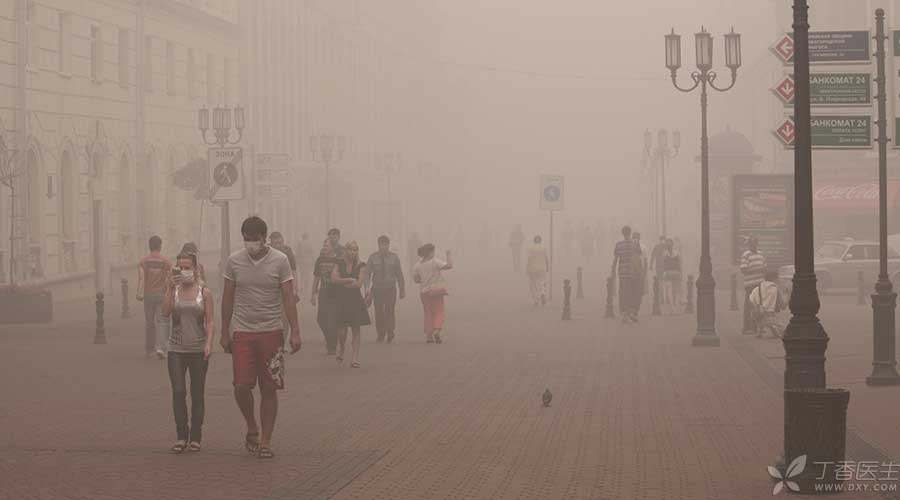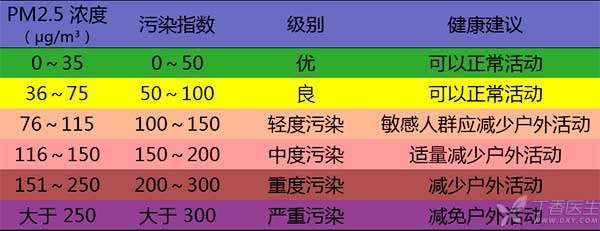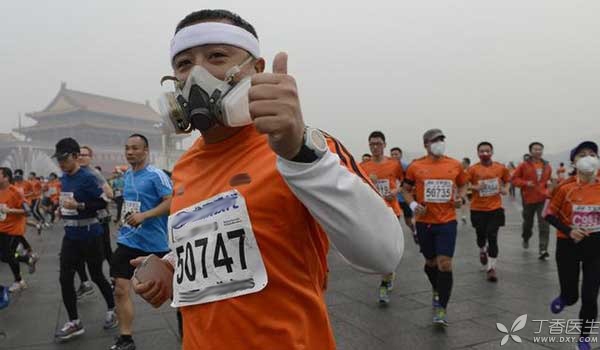
As we all know, regular and sufficient exercise is good for health. A few days ago, Dr. Clove told everyone that healthy people should also exercise regularly in winter.
However, in some areas of our country, when winter comes, the cold air is accompanied by smog. The outdoor air quality is so poor that many people who want to take outdoor sports are relieved: originally they decided to take part in sports for the sake of health, and the outside environment looks like a gas chamber. Go? Or not? It is indeed a dilemma.
Is smog harmful to what?
-
Pollutants in the air will stimulate the large and small airways of the respiratory system, induce infection or immune response, and cause tracheitis, pneumonia, etc.
-
For patients with asthma, air pollution will lead to deterioration of asthma.
-
For patients with basic diseases such as hypertension and coronary heart disease, air pollution will increase the risk of cardiovascular and cerebrovascular diseases.
-
For patients with lung cancer and chronic heart and lung diseases, air pollution will increase the risk of death.
However, the latest research from the University of Copenhagen in Denmark shows that for healthy people, under appropriate circumstances, even on smoggy days, outdoor sports still have more advantages than disadvantages.
Then the question arises, does this [appropriate] mean by what?
Several Problems in Smog Day Movement
Consider one’s own situation
First of all, one should consider one’s health. If one has lung diseases such as chronic bronchitis, emphysema and asthma, it is not recommended to exercise when smog is obvious.
Look at the degree of pollution
Secondly, it depends on the degree of pollution. At present, many apps on mobile phones can query the daily Air Quality Index (AQI). When the air quality is excellent and good, it is suitable for everyone to take outdoor sports. When there is light pollution, friends with respiratory diseases such as allergic rhinitis, asthma and chronic bronchitis should reduce outdoor sports or take appropriate protective measures during sports. In case of severe pollution, outdoor activities will be reduced or exempted.

Exercise time, best around 10: 00 a.m.
In addition to seasonal factors such as late autumn, winter and early spring, the severity of smog is also related to the weather conditions on that day. Factors such as breeze or calm, abundant and stable water vapor near the ground, night and morning with temperature inversion will all lead to severe smog.
In addition, due to urban automobile exhaust, the air quality during morning and evening rush hours is also poor.
Contrary to what many people think [the air is fresh in the evening], the air pollution in the evening is more serious, and the air quality in the morning is relatively safer than that in the morning and evening.
Therefore, outdoor exercise in the morning is recommended, not morning exercise or night exercise.
The ground is safer than the height in the sports place.
Similarly, unlike what we expected, the higher the place, the cleaner it is-pollution sources tend to go up high, and generally more pollution will gather in areas more than 15 meters above the horizon.
Therefore, it is not feasible to exercise on the roof of high-rise buildings in order to avoid pollution. Exercising on the school playground is still a good choice.
Protective measures, wear sports protective masks
When it comes to smog prevention, the first thing everyone comes to is all kinds of [masks].
However, the more common masks on the market either have weak efficacy in protecting PM2.5. For example, disposable medical masks are not worn with them. Either the protection ability is strong but the air permeability is slightly poor, such as N95 mask, which filters 95% of PM2.5. Sensitive people feel a little difficult to breathe when wearing it, let alone running.
It seems that you can’t have both fish and bear’s paw to stop smog and keep breathing smoothly during high-intensity exercise, but the exercise protective mask perfectly solves this problem.
Sports protective mask is a mask designed for outdoor sports. Under the condition of not sacrificing the filtering effect, the smoothness of breathing is improved to the greatest extent.
Basically, any type of outdoor sports, such as mountaineering, jogging, skiing, etc., can choose sports protective masks to protect them.
The protection standards for sports masks vary. The filtering effect of some products meets the strict requirements of European EN149FFP1 (S) for solid particles, while ensuring that particles larger than 0.3 microns (PM 0.3) will be blocked.
It is very important to choose [reliable] sports masks.

Indoor sports
For those who do not want to wear masks, indoor sports are also a good choice. For example: swimming, skipping rope, indoor aerobics, aerobic dance, yoga, etc.
However, it should be noted that the air quality in most indoor fitness facilities is actually worse than that in outdoor areas with smog. Therefore, please turn on the indoor ventilation equipment to ensure that the smell of the new fitness equipment has been exhausted.
